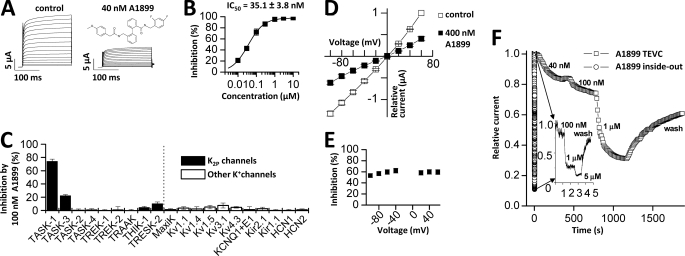FIGURE 1.
A1899 selectively blocks human TASK-1 channels expressed in Xenopus oocytes. A, human TASK-1 channels recorded with a voltage step protocol (200-ms steps from −70 mV to +70 mV with an increment of 10 mV; holding potential, −80 mV) before (left) and after (right) application of 40 nm A1899 (see inset for chemical structure of A1899). B, dose-response curve of A1899 on human TASK-1. Block was analyzed at the end of the test pulse to +40 mV. C, test for sensitivity of different potassium channels to 100 nm A1899 after heterologous expression in Xenopus oocytes. D, I-V relationships for TASK-1 in bath solution with high potassium concentration before (□) and after (■) application of 400 nm A1899. E, the percentage of inhibition by 400 nm A1899 from D plotted against the applied voltage. F, application of different concentrations of A1899 to TASK-3 channels recorded in intact whole oocytes (□) and in inside-out macropatches (○). The inset shows the recording of inside-out macropatches with a higher temporal resolution. TEVC, two-electrode voltage clamp.

